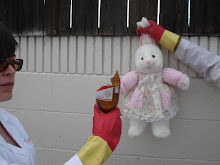Liquefaction happens when you take a bunch of unconsolidated (loose) sediments, like sand, get’em wet, and then shake the shit out of ‘em. Wet sand might be fine on its own, but once it’s shaken (like during an earthquake) the sand looses its resistance to shear stress and behaves like a fluid. As you can imagine, this causes a lot of problems in the realm of engineering and structural design. You might think “Well, no big deal. I’m sure structures are built to withstand this by sinking the foundation deep into the ground”. Unfortunately this is not the case around the world. The US enjoys pretty strict building codes and organizations that are paid to enforce them. Such is not the case in places that can’t afford to be as stringent about building safety or just don’t have the time to think about the buildings they live in.
This is what liquefaction does.
 The picture above was taken after the Niigata Earthquake in 1964 (click here for a map). There was a magnitude 7.5 earthquake offshore that triggered a tsunami, but luckily the loss of human life was minimal. The apartment buildings in the picture are still totally intact, not much structural damage. Just tipped over. Kind of amazing, isn’t it?
The picture above was taken after the Niigata Earthquake in 1964 (click here for a map). There was a magnitude 7.5 earthquake offshore that triggered a tsunami, but luckily the loss of human life was minimal. The apartment buildings in the picture are still totally intact, not much structural damage. Just tipped over. Kind of amazing, isn’t it?
Not all towns affected by liquefaction are that lucky. Just check out this newspaper illustration made after an earthquake struck Port Royal, Jamaica. Port Royal was a popular pirate pit stop in the 17th century where debauchery reigned! I remember being told once that it was the inspiration for the port *his lordship* Johnny Depp puts together his crew of ruffians in the first Pirates of the Caribbean movie. It might as well have been, but don’t quote me on that. Anyways, the town was built on a sand spit and when an earthquake hit in 1692, a big chunk of the city literally sank into the ocean. During the shaking, the ground turned into sandy slurry and swallowed people up whole.
Port Royal was a popular pirate pit stop in the 17th century where debauchery reigned! I remember being told once that it was the inspiration for the port *his lordship* Johnny Depp puts together his crew of ruffians in the first Pirates of the Caribbean movie. It might as well have been, but don’t quote me on that. Anyways, the town was built on a sand spit and when an earthquake hit in 1692, a big chunk of the city literally sank into the ocean. During the shaking, the ground turned into sandy slurry and swallowed people up whole.
Warning! Stop reading if you are a squeemy baby! Probably the most horrifying part of all this is the people who were trapped in the sand once the shaking stopped. You see, without the shaking the sediments go back to normal, so anyone who had any part of their body trapped in the sand when it was liquid was crushed as it solidified. You probably can’t see it in the picture, but there are little people stuck in the ground and dogs eating the heads of the deceased. Gruesome!
So that’s liquefaction. What else is there to say about a process that swallows people whole and causes buildings to tip over? Liquefaction: the sporadic killer.


No comments:
Post a Comment